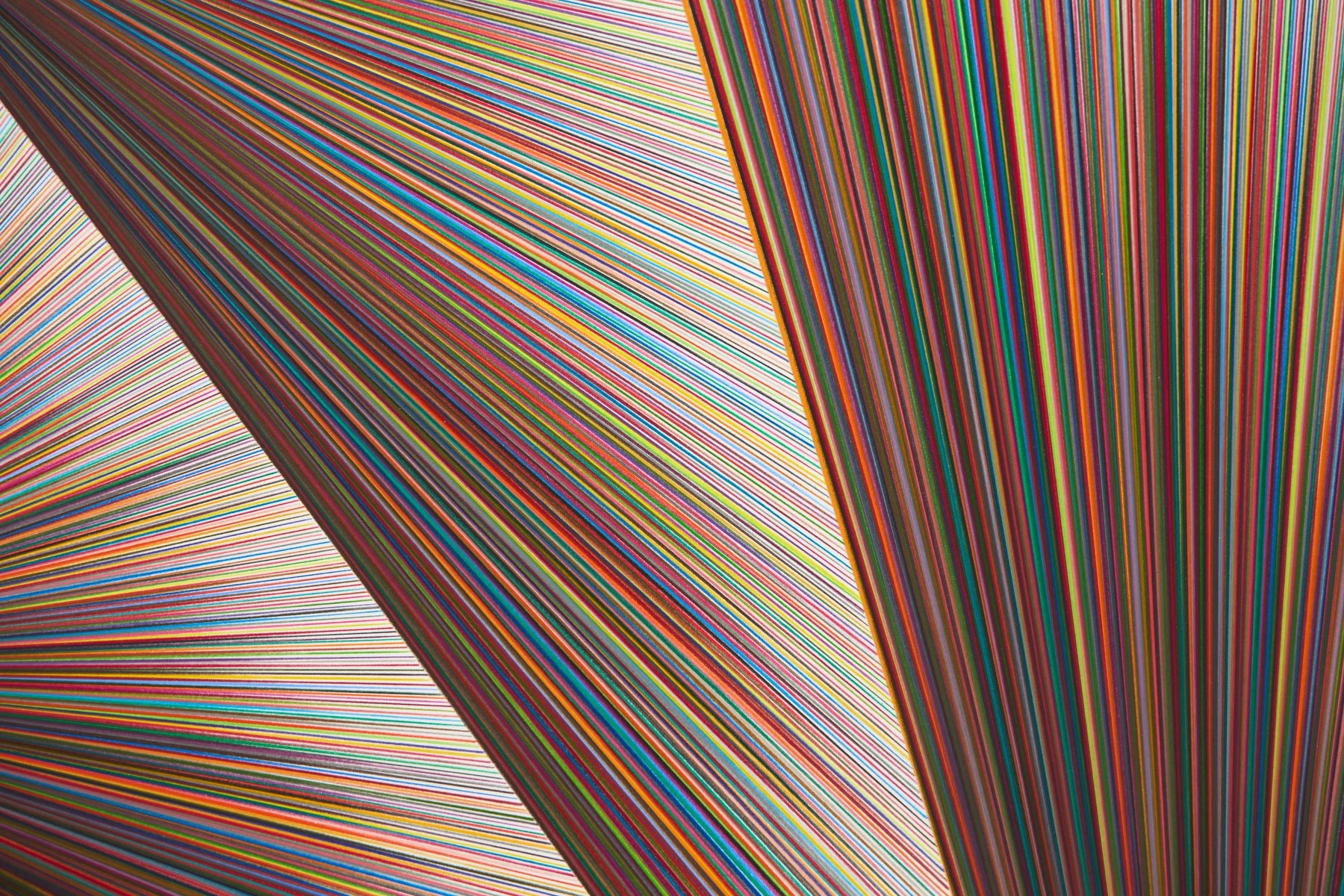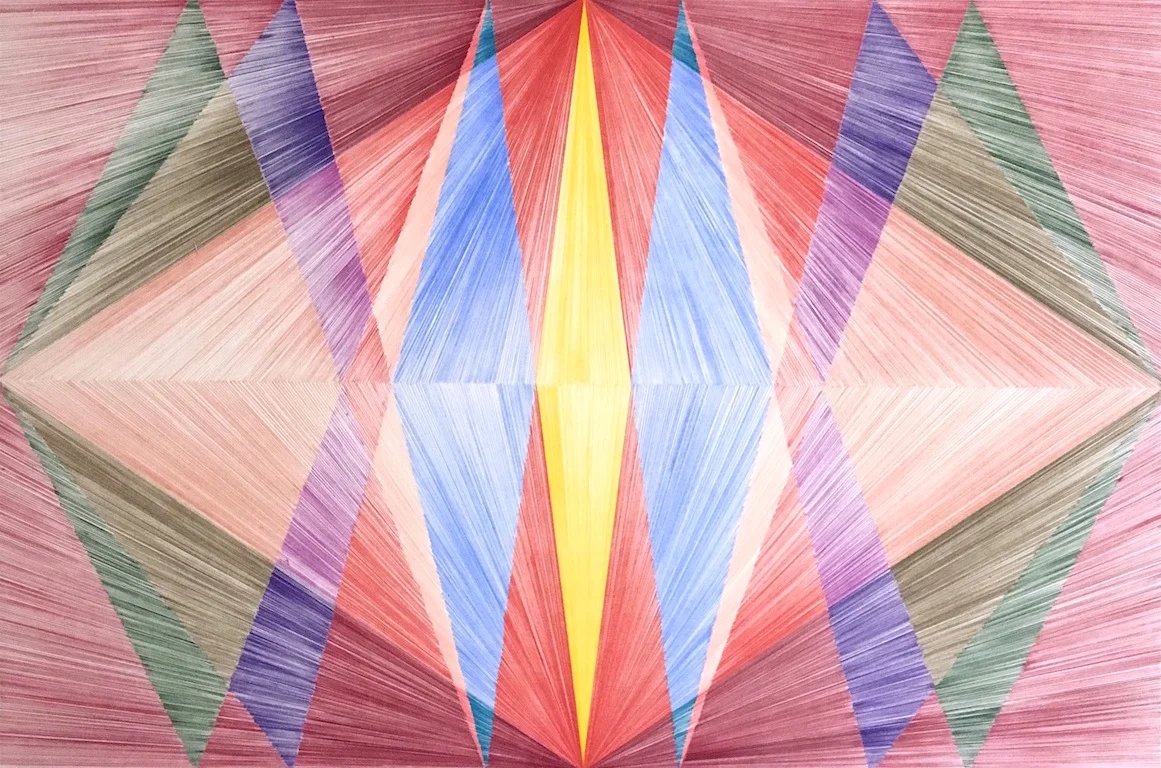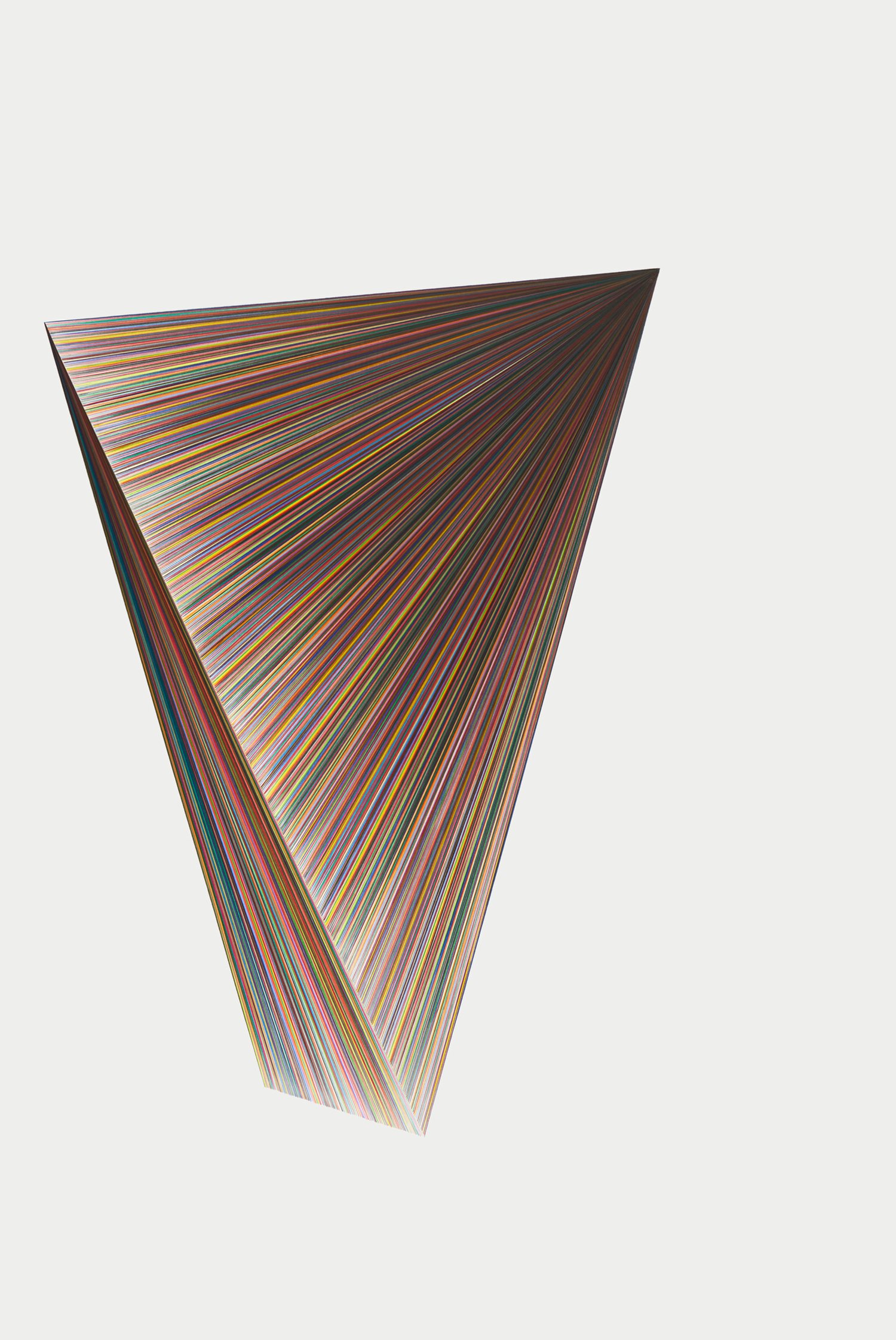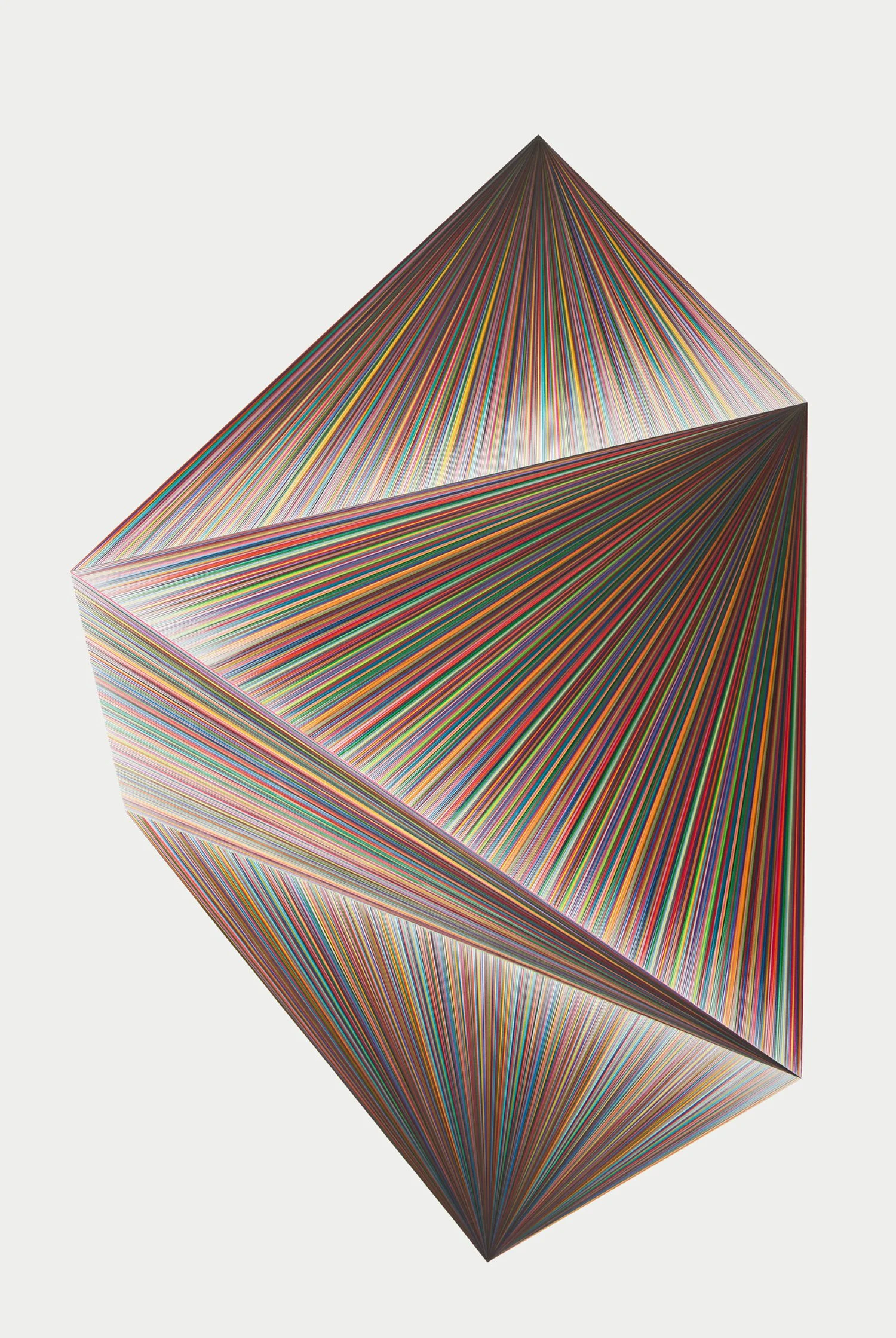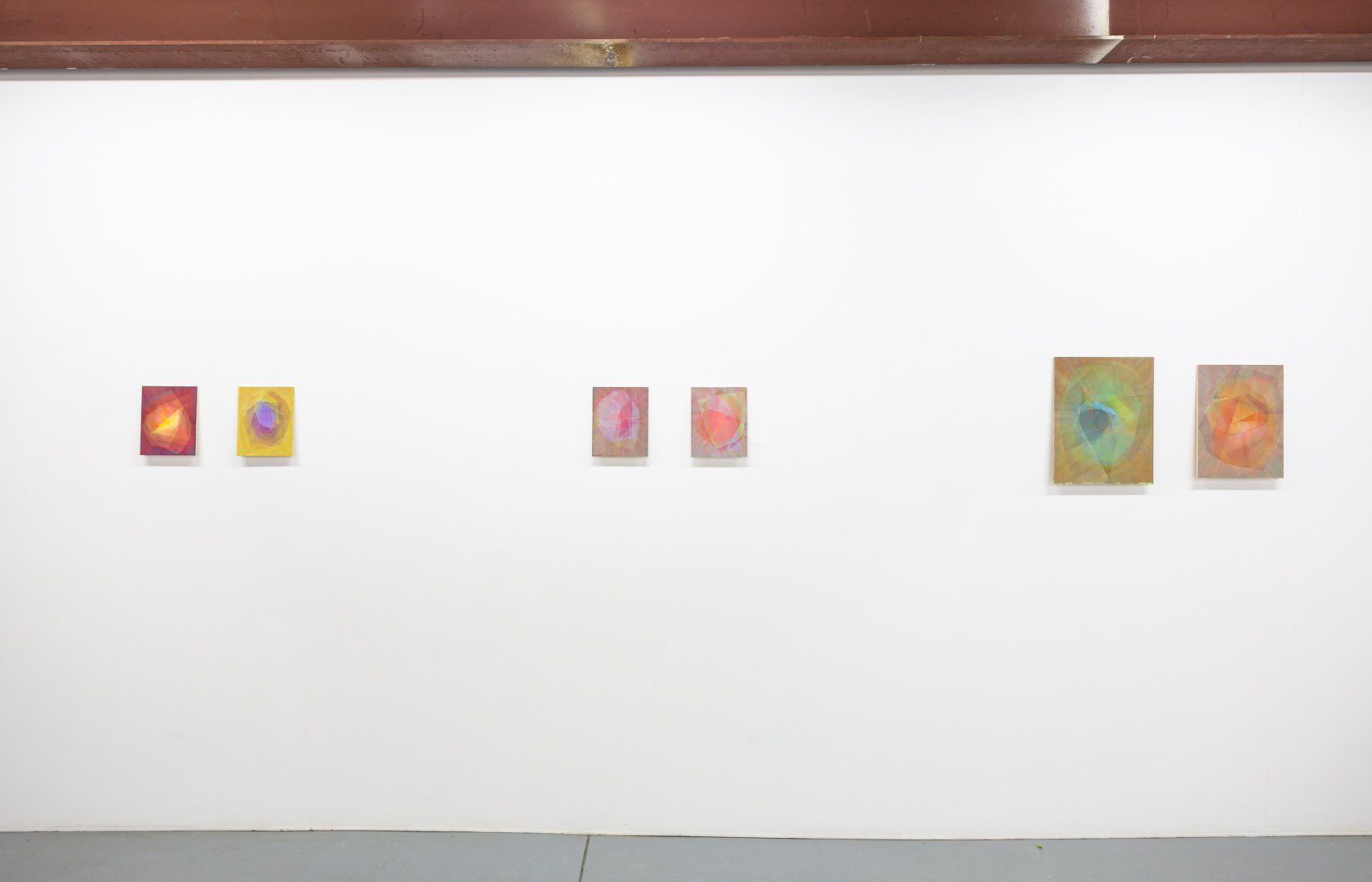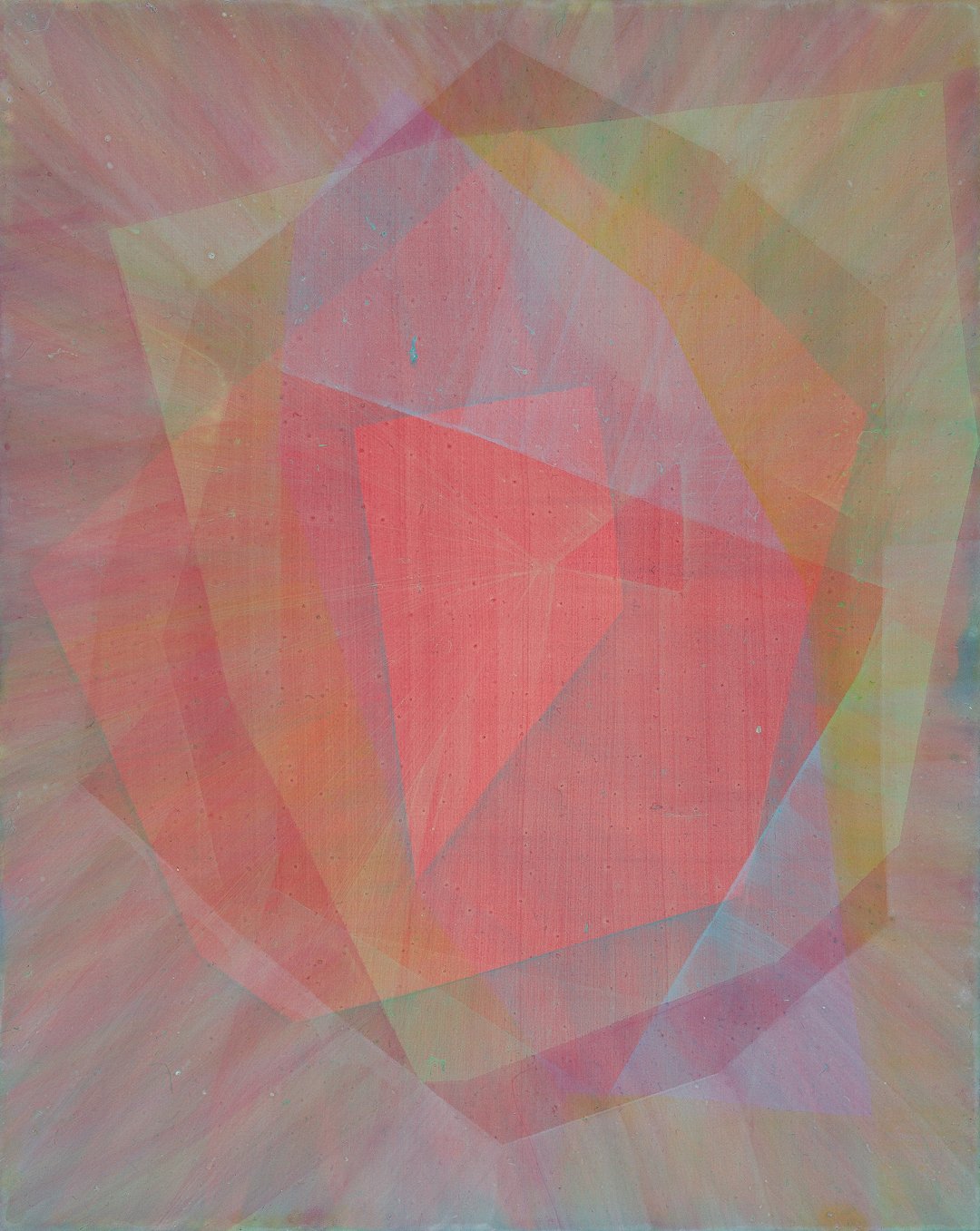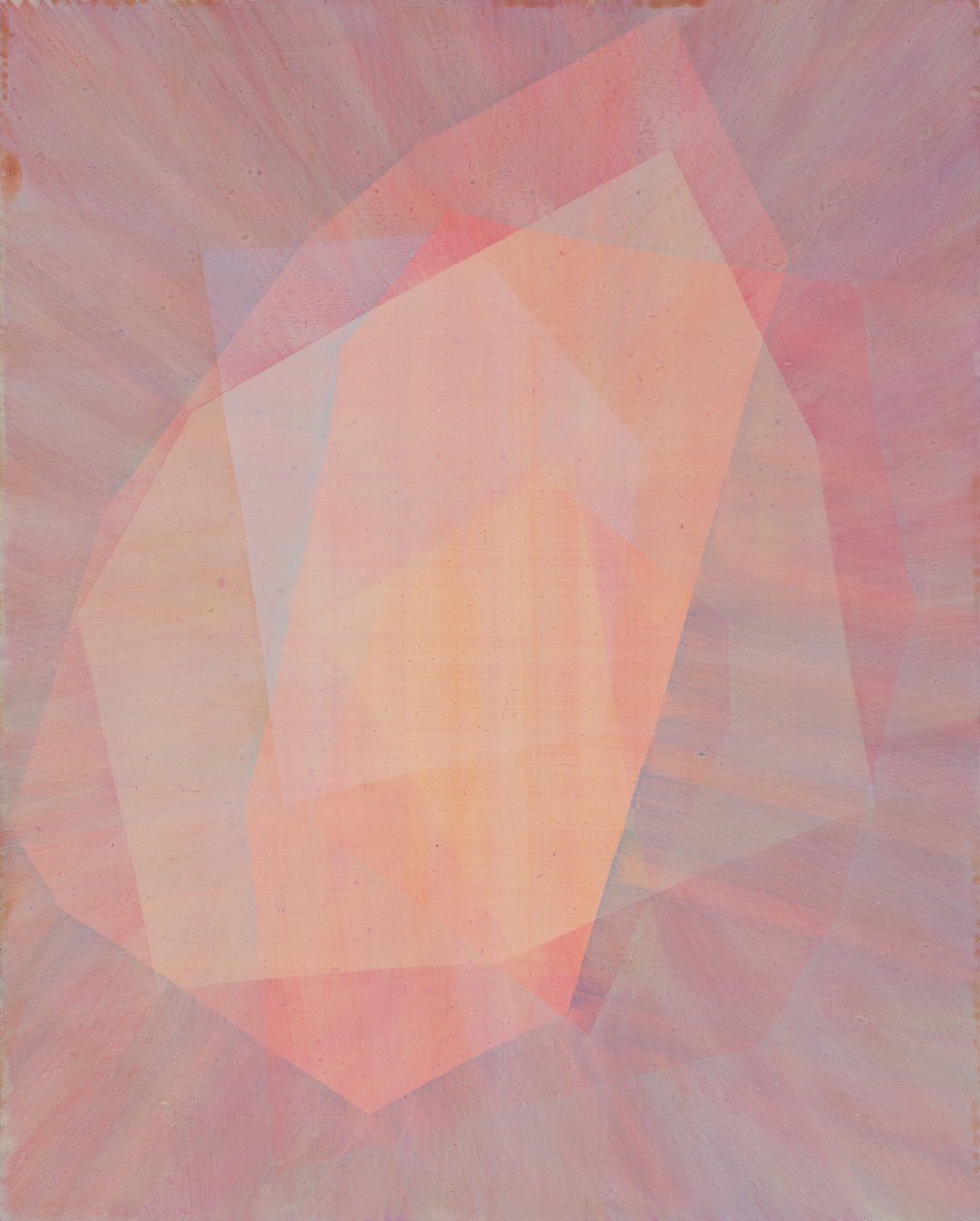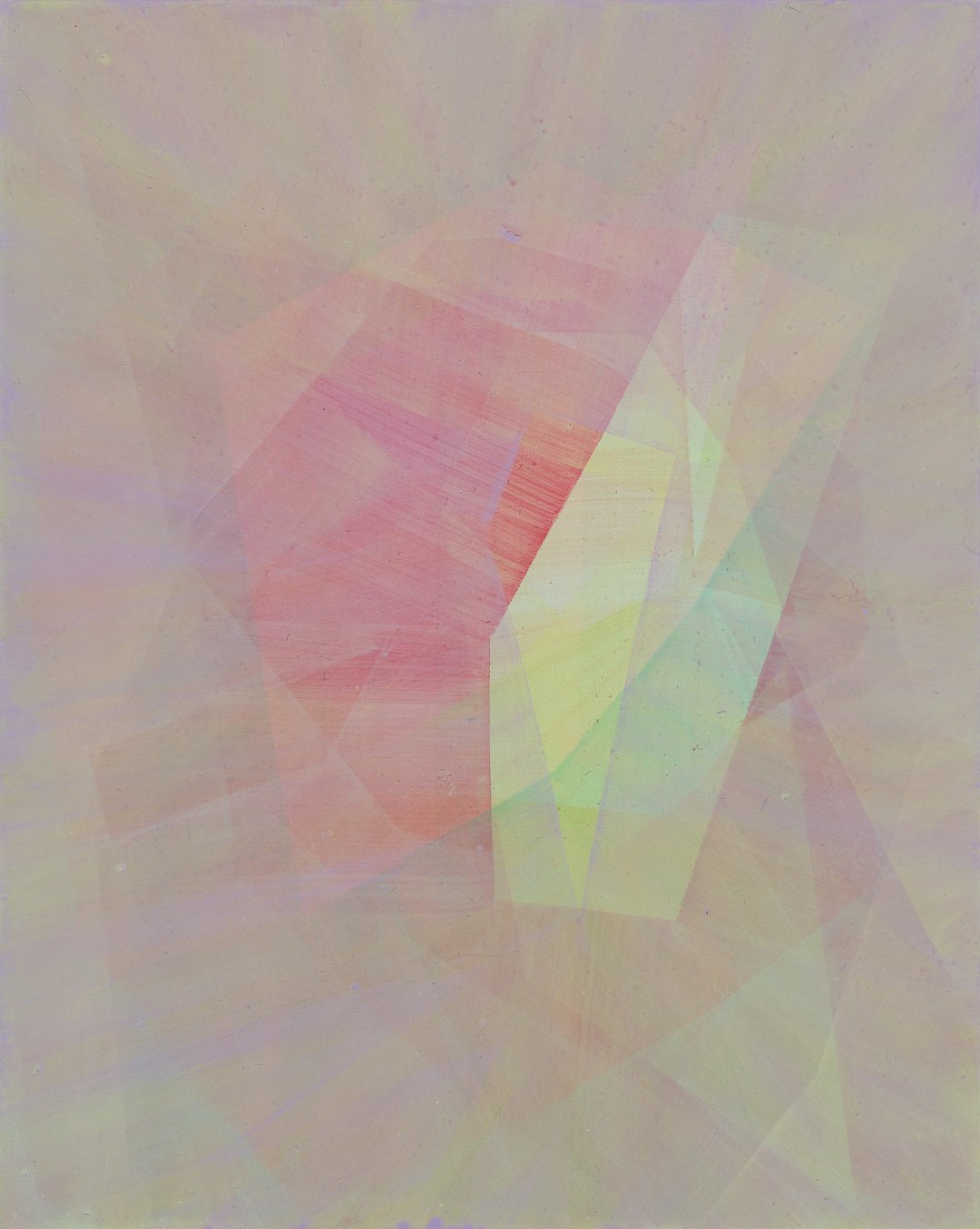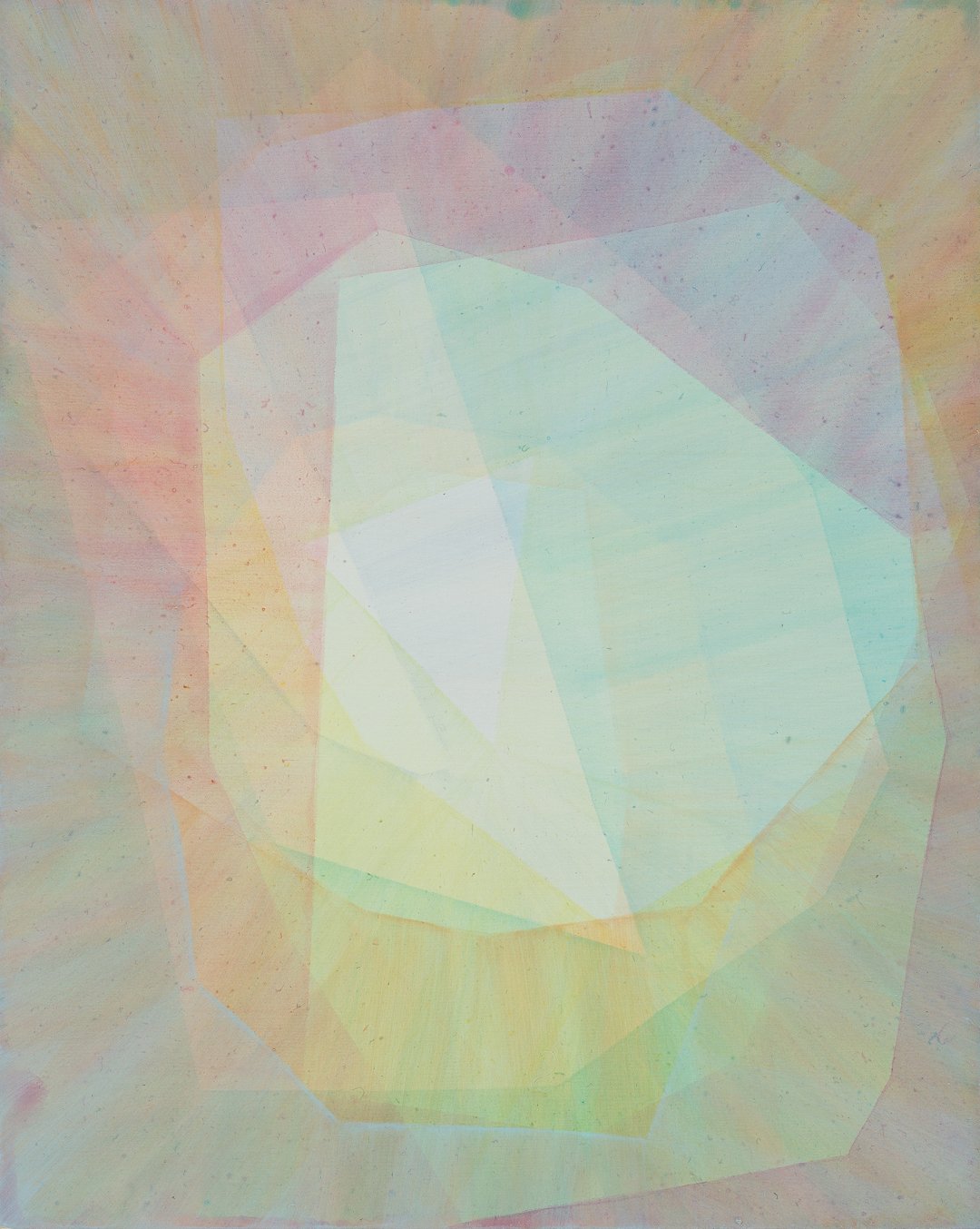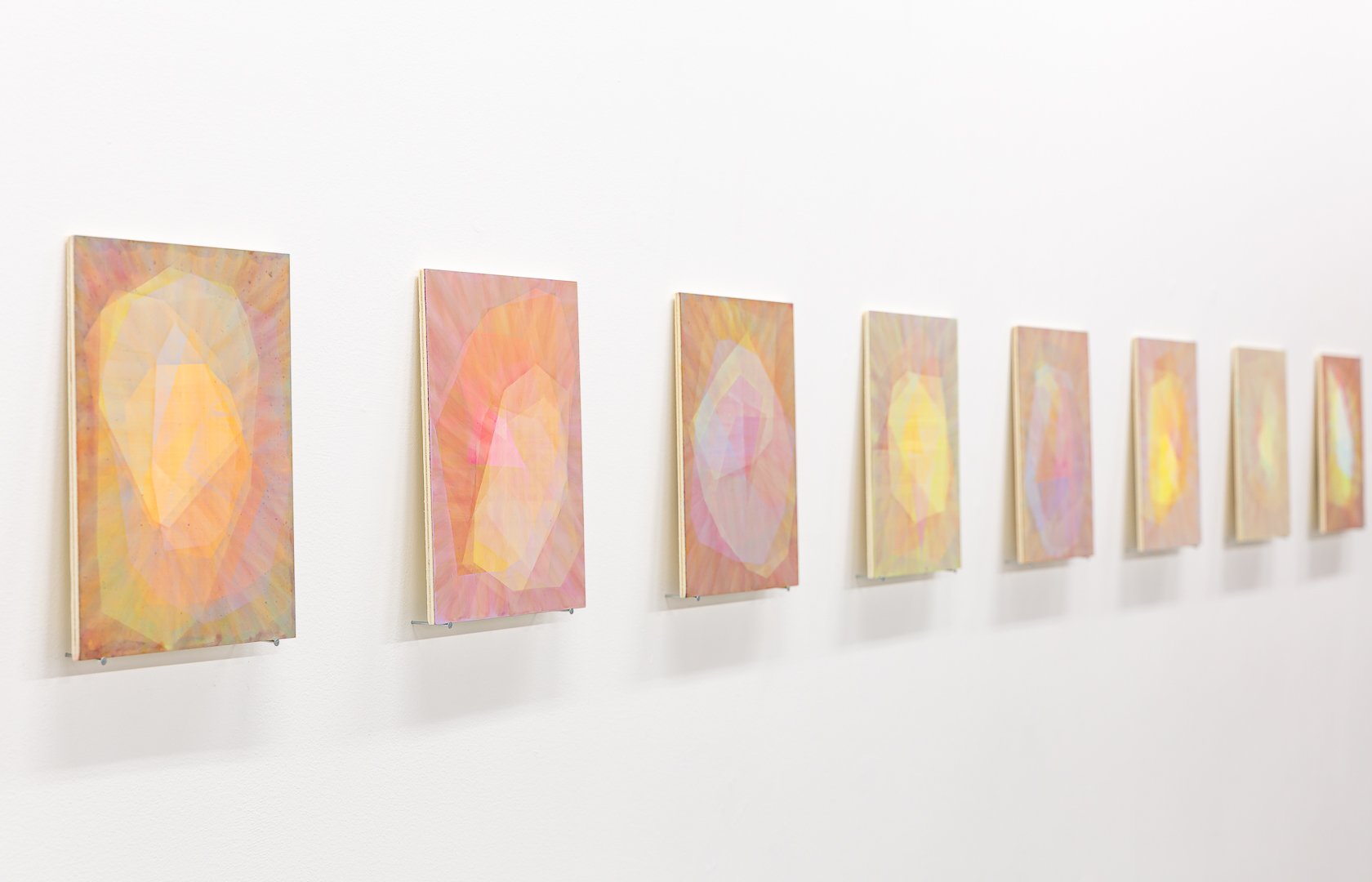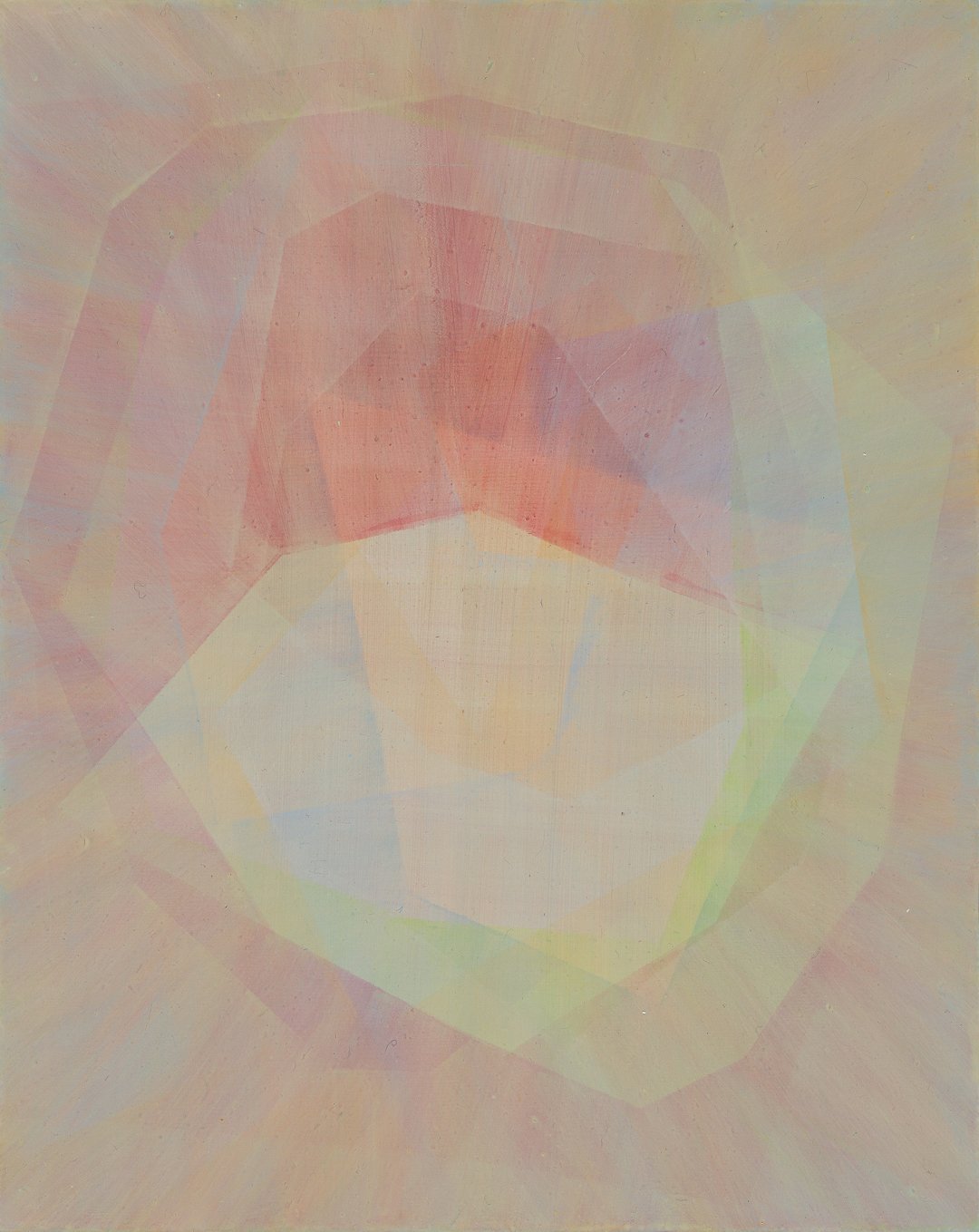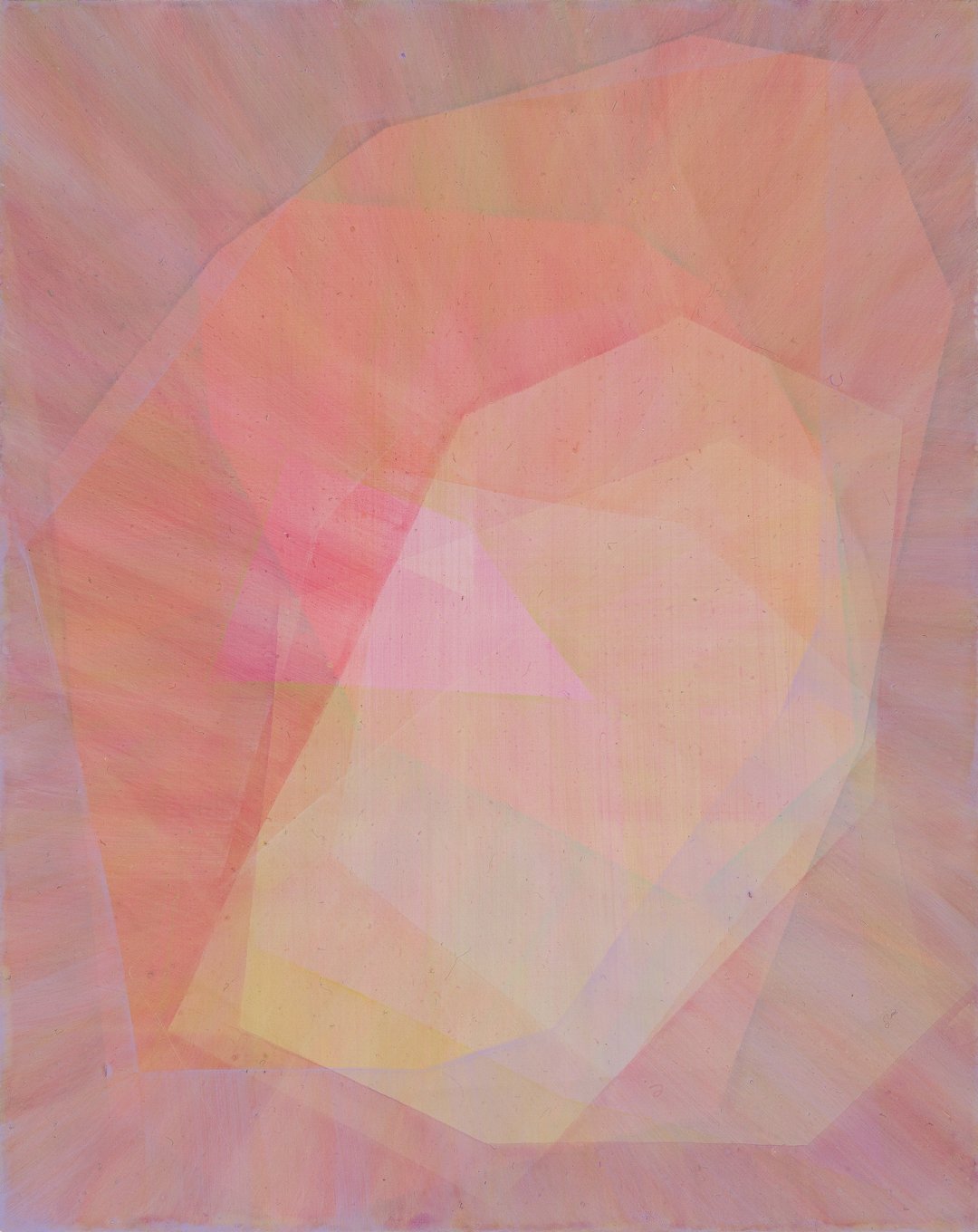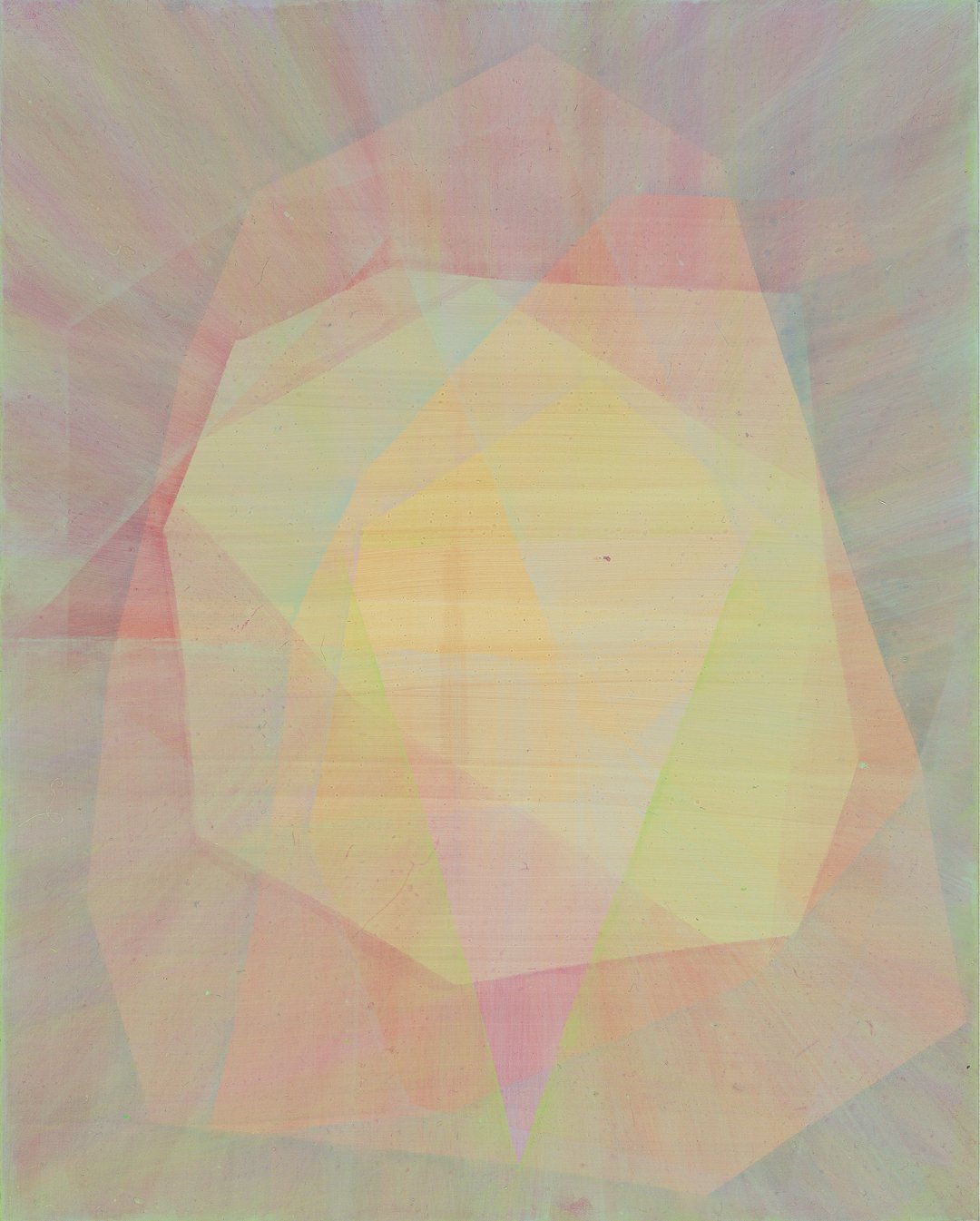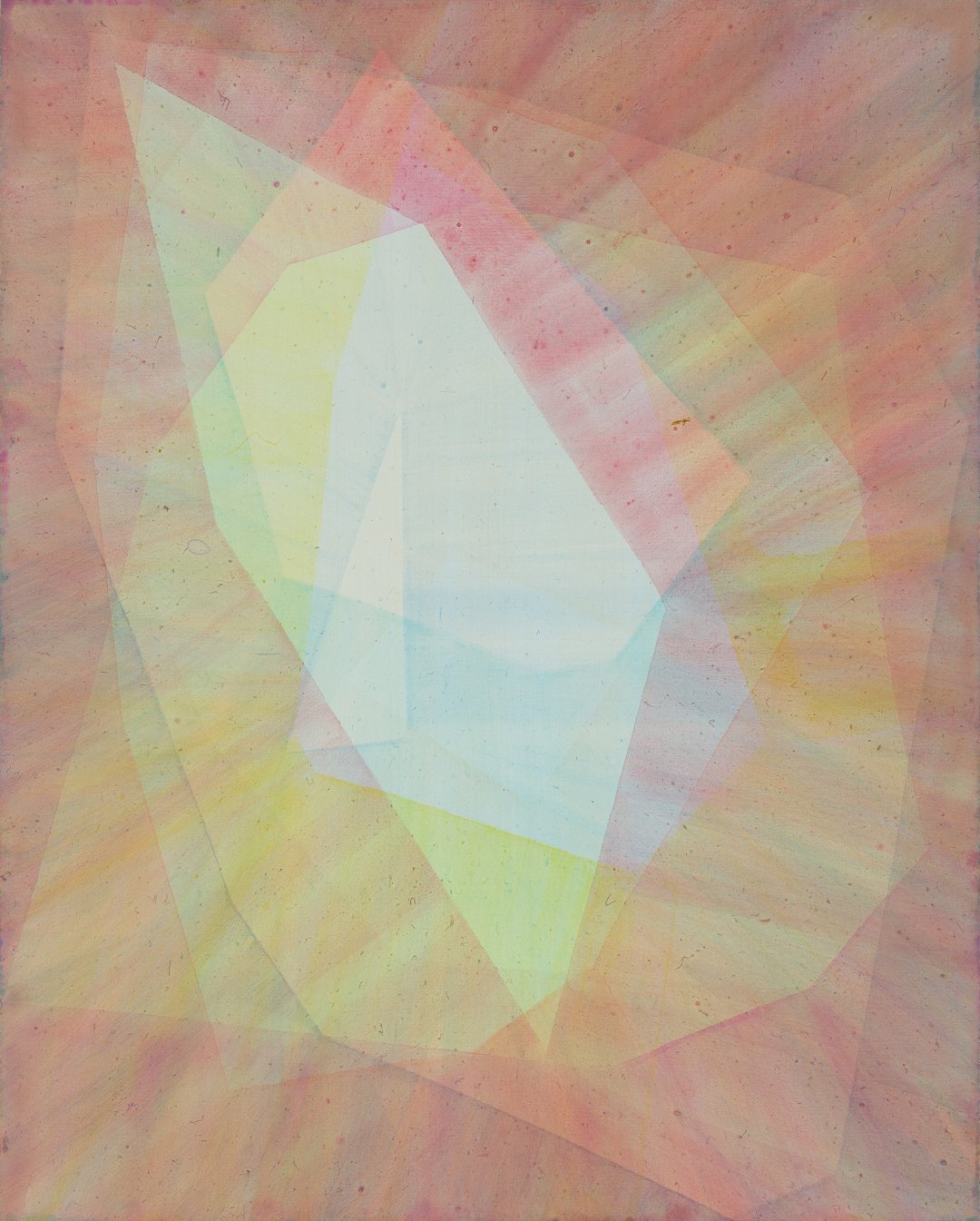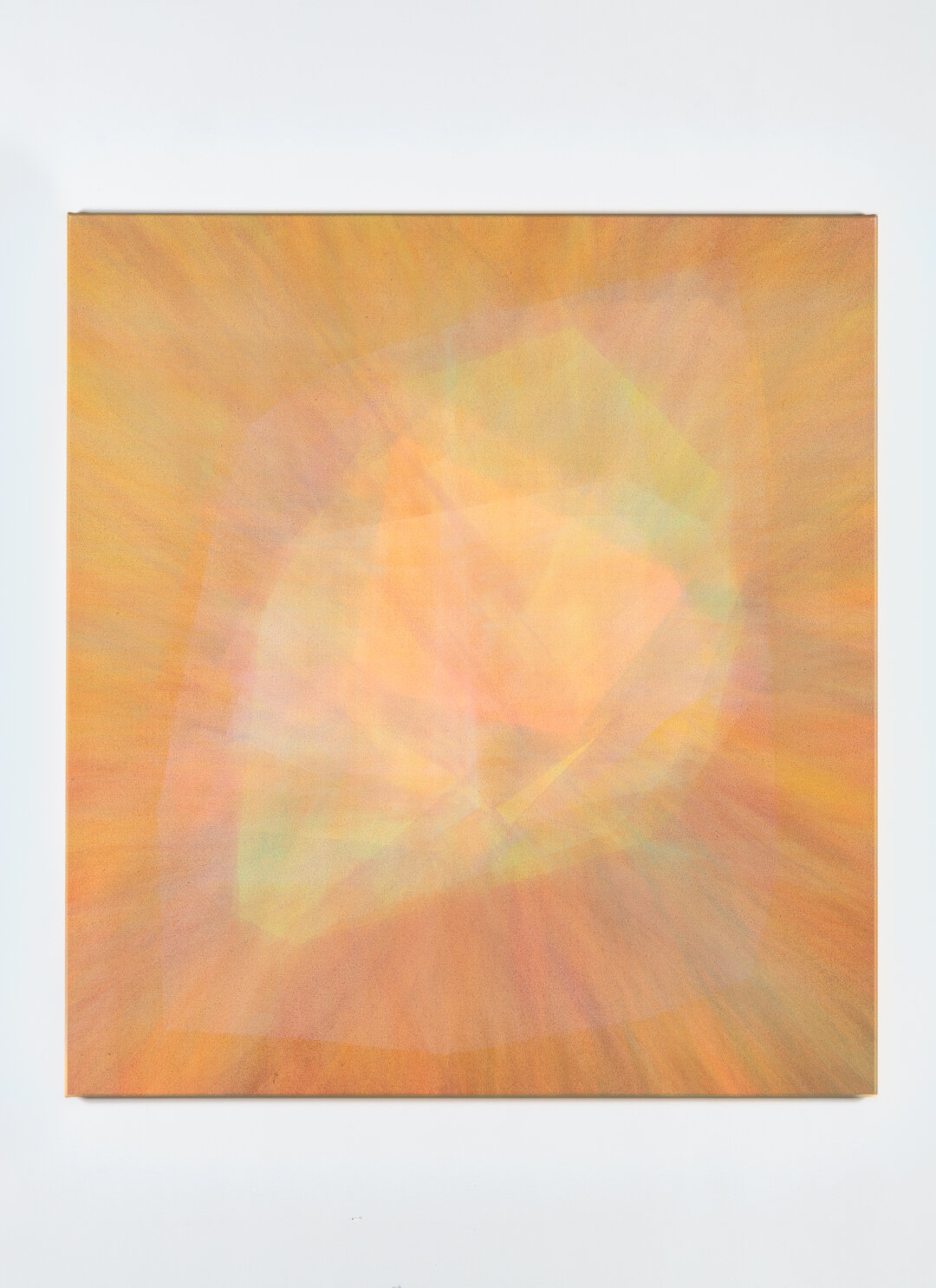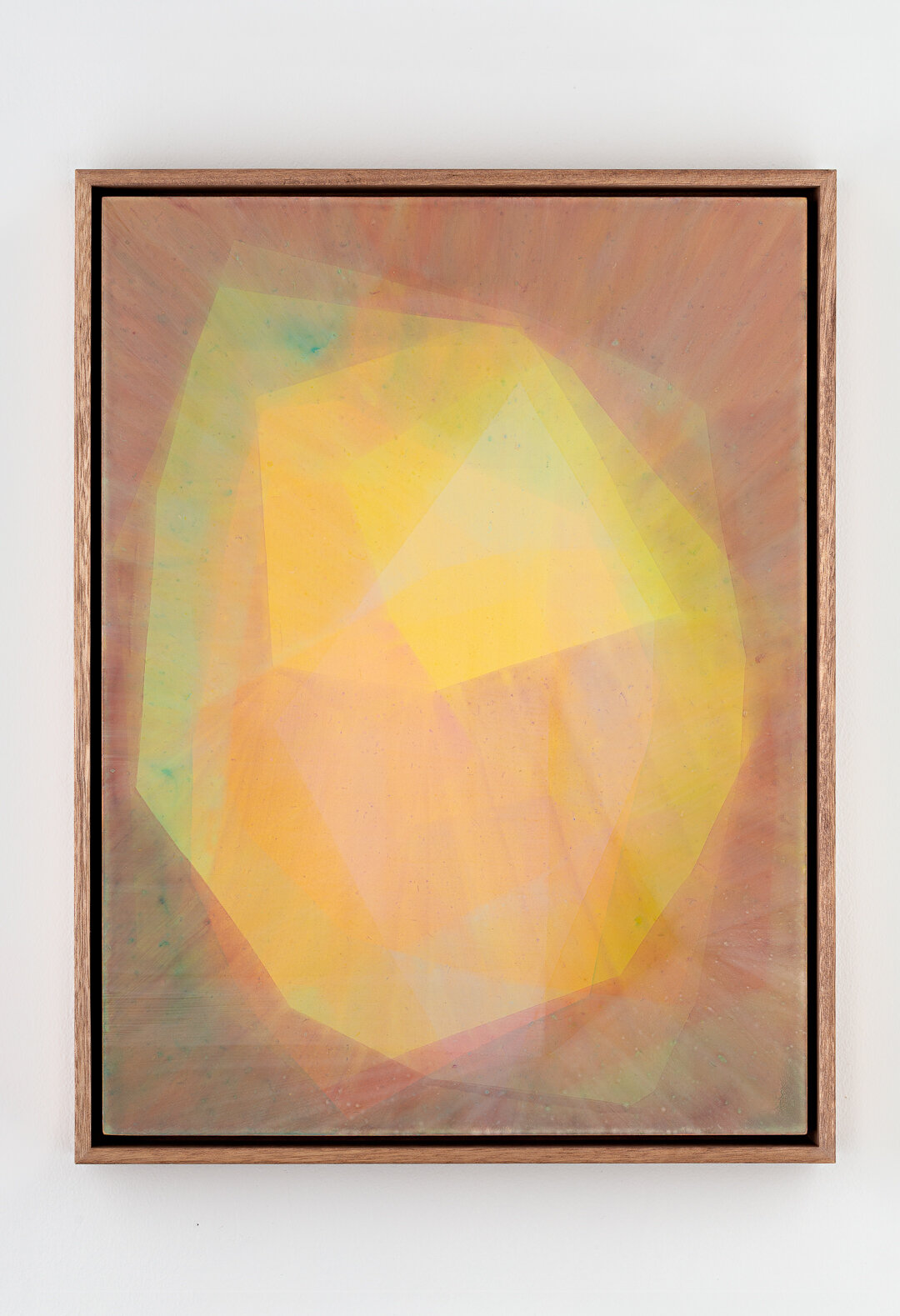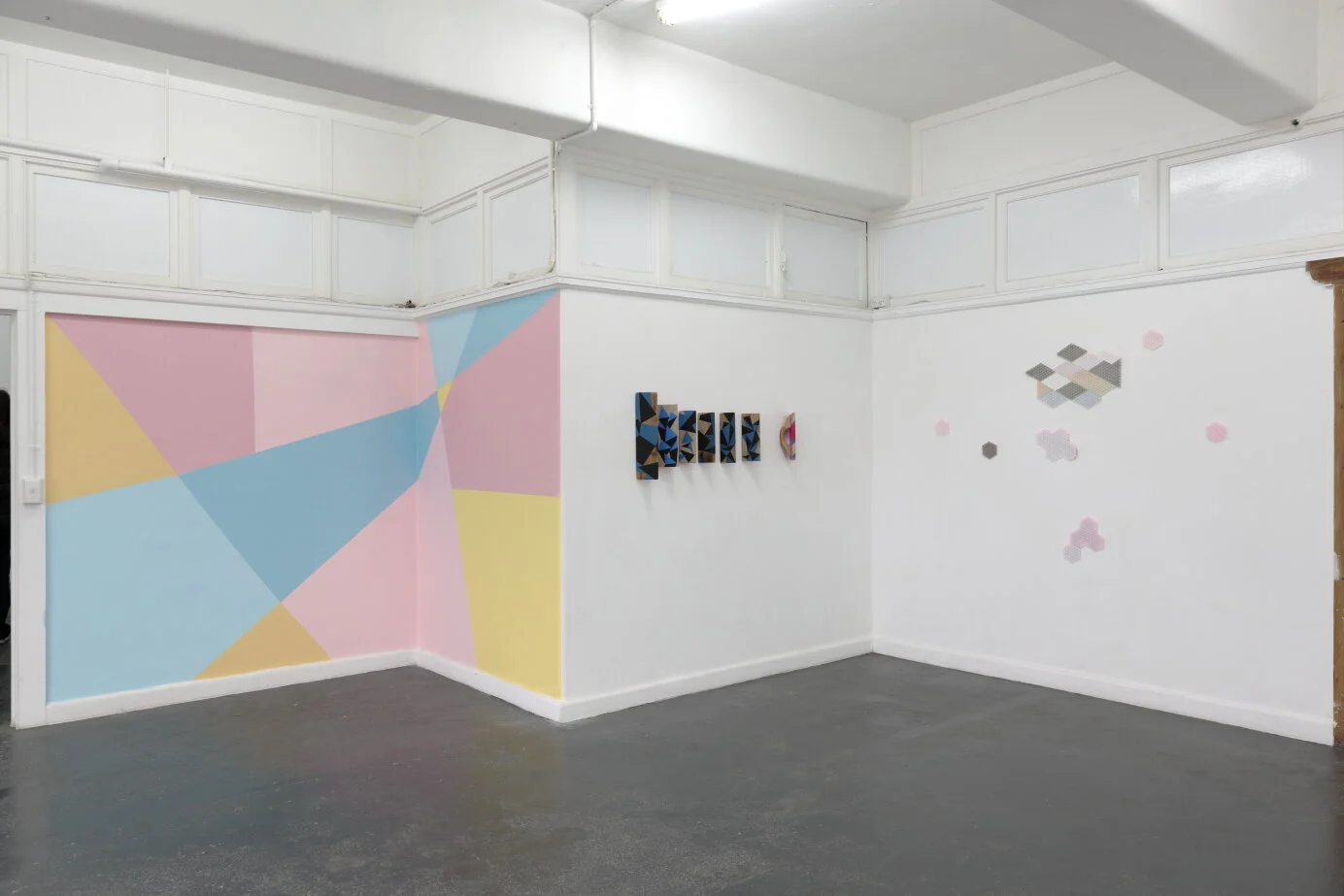Artwork details from left to right
Annelies Jahn, 5 x 9 #2A (2019), Instructional wall drawing conceived with pencil, pushpins and string, 180 x 260 cm
Nadia Odlum, Our separate ways, study I, II, & III (2018), Gouache on paper, 21 x 15 cm each
Britt Salt, Echo-theque (2019), Vinyl and Perspex, Dimensions variable
Will Cooke, Looking at Unusual Things with Unusual Eyes (Hey Moon II) (2019), Primer, acrylic and aluminium in Tasmanian oak frame, 61.5 x 51.5 cm
Lieutenant + Vassallo, Gelato (2019), House paint applied directly to wall, Dimensions variable
Ham Darroch, Floats (planes 1-7) (2019), Acrylic and concrete on wood, Varying sizes, as dictated by found objects
Katy Mutton, Subversion prototypes (2019), Mixed PLA filaments and mesh, Dimensions variable
Exhibition photographed by Tim Gresham
Plexus brings together a group of Australian artists working with geometric abstraction and spatial intervention. Focused on process and materiality, these abstractionists use self-designed systems to help generate their artworks. Deriving from the Latin ‘to braid’, plexus refers to an intricate system or network of parts. In this context, systems and networks are reflected both in the art making of each individual and the way these artworks weave together within the gallery space.
Geometric abstraction has a history of communicating our experience in the built environment. Three small-scale works on paper by Nadia Odlum consider individuals navigating space. Her process begins by observing people in public environments, mapping out their trajectories and considering the way their actions are shaped by the surrounding architecture. These observations often lead to spatial interventions, using vinyl, wood, steel, mirrors and/or painted surfaces to create immersive installations, she reflects the built environment back to the public. These studies led to a large-scale, site-responsive vinyl artwork, applied to the floor in the space where Odlum originally observed the patterns of movement. A loop of process is formed, from observing large-scale movement, to small-scale mapping and digesting in the studio, then returning back to immersive scale. These studies reflect the quietest moment in this loop, an artist working through their ideas. Using gouache on paper to map out pathways that overlap and zigzag, this meditative and precise act of making reflects an internal thought made public.
In a similar way, Will Cooke’s work feels like the product of visualising the meditative thought processes that happen in the studio. Working on the boundary of handmade and mechanical art making, his process incorporates repetitious layering of airbrushed stencils. The outcome is precise, but the process leaves space for the materials to dictate the direction an artwork will take. Unexpected outcomes or slippages that occur throughout the layering process are reminiscent of misregistration in industrial print processes. But these small moments are what make Cooke’s work feel intimate and personal.
Katy Mutton is also working through incorporating mechanical and digital processes into her art practice. She is focused on research into data visualisation, visual language systems and propaganda. Recently thinking through ideas on data mining and population surveillance, this work employs 3D printing to connect thousands of small ‘scales’ to tulle fabric. The contrast of the hard and soft creates a unique materiality. Her work is at once celebrating the digital, while being suspicious of it. Mutton is taking digital ideas and planting them firmly in our real, tactile world.
Like many of the artists in this show, Britt Salt is focused on spatial engagement and response. Navigating materially driven processes of repetition and pattern making, her work responds to both art and architecture. Often working to enormous scale, it feels as natural to see her artwork occupying vast space among architectural structures as it does within the confines of a gallery. Her artwork often features multiple picture planes and optical play that appears to be expanding or contracting. Like the Light and Space artists from West-Coast America in the 60s, Salt works with a kind of minimalism that is always in flux. Reliant on the viewer within the space to activate the installation, it is translucent, mobile and shifting. The intricacy and layering of the subtle pattern evokes a sense of camouflage, at once illusionistic and simple. There is no single vantage point to view this piece. Viewers in the space become active, no longer passive bystanders but initiators who are actively navigating and experiencing.
Lieutenant + Vassallo also specialise in interventions in the built environment. The visual artist pair collaborate using geometric wall painting as a tool to visually investigate and interrogate architectural spaces. Often using patterning like camouflage, they at once respond to the spaces they work within while obliterating their surfaces with colour and form. Working in the grey area between art and design, the pair uses collaboration and instruction as a way to question authorship and remove personal expression from their work.
Also working with instructionally created spatial installation, Annelies Jahn presents an artwork that began with an element of chance. In 2016 Jahn made the artwork 5 x 9, installing and removing a grid of found cardboard boxes pinned directly to the wall. After removing the artwork, she was struck by the grid of pinholes left behind, disturbing with the otherwise pristine gallery wall. Maximising on this serendipitous moment, the artist began putting pins back into the holes of the grid. Connecting the pins with string made a new artwork, the 5 x 9 series was born. We see the latest iteration installed in Plexus. Jahn has developed a set of instructions to replicate the original process, while also responding to the dimensions of Blindside’s gallery space. These new instructions still incorporate a level of chance and serendipity that makes the piece feel both logical and organic.
While Jahn uses her past artworks as building blocks for new pieces, Ham Darroch has similar serendipitous moments when painting onto found objects. Sourcing and working onto objects that have had a previous life, he uses the formal elements of these utilitarian objects as a starting point. He then applies colour and pattern to the object’s surfaces with meticulous and precise detail. Patterns skimming across the worn surfaces feel spontaneous, like little bursts of new life. Despite the painted colours looking geometric and sharp, the angles and forms that emerge are playful and fluctuating. Some allude to optical perspective; others appear to be tumbling off the surface. This object augmentation goes beyond simple decoration or embellishment. These objects have been deeply considered and cared for. In choosing to paint on the flat plane of the floats, Darroch is somewhat subverting these objects. We see them with the handle facing the wall and the flat plane exposed to the viewer, defiantly opposing their function and daring an audience to see beyond this.
Each of these artists has developed a sophisticated and highly intricate artistic process. Over years of studio-based research, the smallest details are considered at length. They utilise repetitious and laborious actions in the studio, their artworks are time consuming to construct. Some use external references to inform their processes, others rely on internal instinct and intuition. Universally, they deeply consider the sensory dialogue created when viewing their artworks. These artists play with pattern, perception and spatial awareness, while each working through their own versions of logic.

